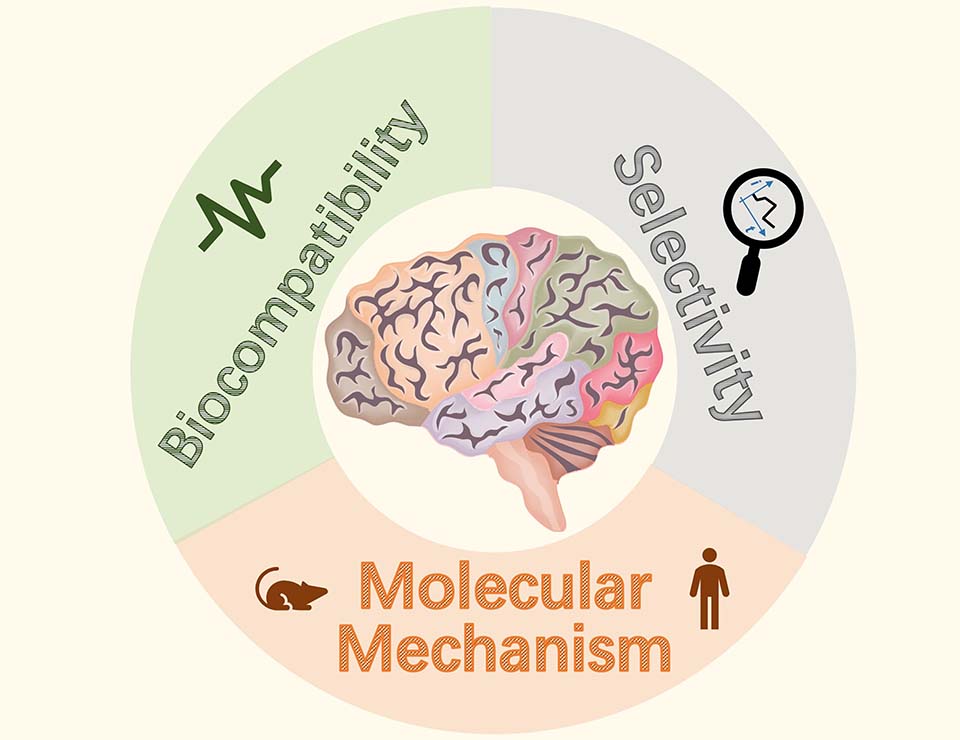

脑神经电化学研究
收稿日期: 2021-12-14
修回日期: 2022-01-04
网络出版日期: 2022-01-10
版权
Brain Electrochemistry
Received date: 2021-12-14
Revised date: 2022-01-04
Online published: 2022-01-10
Copyright
大脑是认知、情感等神经活动的物质基础。脑内神经元通过化学信号及电信号相互连接,共同构成动态而复杂的神经信号网络,实现各项神经活动。因此,对于脑神经化学分子的分析与检测有助于揭示神经生理、病理过程中的分子机制,进而发展神经系统疾病的精准诊断及治疗手段。随着各学科的融合与发展,已有多种分析技术在不同层次实现神经分子的检测。其中,电化学分析方法具有高灵敏、高时空分辨等优势,有望在活体层次上精准描述特定神经分子在神经生理或病理过程中的动态变化。本文围绕选择性以及生理兼容性两大关键问题展开,以本课题组最新研究进展为例,系统阐述了电极界面的构筑原则以及电位型检测方法的独特优势,着重介绍了抗坏血酸在神经生理和病理过程中的动态变化规律,并对脑神经电化学分析领域的发展前景进行了展望。

徐聪 , 江迎 , 于萍 , 毛兰群 . 脑神经电化学研究[J]. 电化学, 2022 , 28(3) : 2108551 . DOI: 10.13208/j.electrochem.210855
Brain, as the source of neural activities such as perceptions and emotions, consists of the dynamic and complex networks of neurons that implement brain functions through electrical and chemical interactions. Therefore, analyzing and monitoring neurochemicals in living brain can greatly contribute to uncovering the molecular mechanism in both physiological and pathological processes, and to taking a further step in developing precise medical diagnosis and treatment against brain diseases. Through collaborations across disciplines, a handful of analytical tools have been proven to be befitting in neurochemical measurement, spanning the level of vesicles, cells, and living brains. Among these, electrochemical methods endowed with high sensitivity and spatiotemporal resolution provide a promising way to precisely describe the dynamics of target neurochemicals during various neural activities. In this review, we expand the discussion on strategies to address two key issues of in vivo electrochemical sensing, namely, selectivity and biocompatibility, taking our latest studies as typical examples. We systematically elaborate for the first time the rationale behind engineering electrode/brain interface, as well as the unique advantages of potentiometric sensing methods. In particular, we highlight our recent progress on employing the as-prepared in vivo electrochemical sensors to unravel the molecular mechanism of ascorbate in physiological and pathological processes, aiming to draw a blueprint for the future development of in vivo electrochemical sensing of brain neurochemicals.

/
| 〈 |
|
〉 |